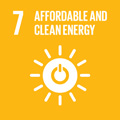- Docente: Francesca Ferretti
- Credits: 6
- Language: Italian
- Moduli: Francesca Ferretti (Modulo 1) Fausto Barbolini (Modulo 2)
- Teaching Mode: Traditional lectures (Modulo 1) Traditional lectures (Modulo 2)
- Campus: Bologna
- Corso: First cycle degree programme (L) in Techniques and Management for Construction and Land (cod. 6008)
-
from Feb 17, 2025 to Jun 09, 2025
-
from Feb 17, 2025 to Jun 09, 2025
Learning outcomes
At the end of the Construction and Rehabilitation Laboratory, the student knows the techniques for carrying out consolidation interventions on existing buildings, from the point of view of the approach to improving and renovating buildings, the better materials for these applications, and the most suitable construction techniques. The knowledge will also be learned in the context of an teachning laboratory aimed at solving one or more application case studies.
Course contents
MODULE 1
Behaviour of existing masonry and reinforced concrete buildings under static loading conditions. Definition of possible damage states and identification of the causes.
Knowledge procedures and evaluation of the structural performances for the safety assessment.
Strengthening of existing buildings: objectives and goals, interventions on structural and nonstructural elements (beams, columns, slabs, walls, arches, vaults, foundations), use of traditional and innovative materials.
MODULE 2
Knowledge of energy retrofit and regeneration techniques by deepening the typologies of intervention on the fundamental dispersing components of the building envelope. At the same time, the main solar systems and their integration into architectural morphology will be analyzed to meet the energy needs of existing buildings.
Design project where student groups will apply the intervention approaches learned during the course on a case study of an existing building. The contents of the course "Laboratorio di Certificazione Energetica" will be also applied on the design project.
There will be some lectures with companies in the sector that will illustrate some technological and design solutions for interventions on existing buildings.
Readings/Bibliography
- Mastrodicasa S., Dissesti statici delle strutture edilizie - Diagnosi, consolidamento, istituzioni teoriche e applicazioni, Hoepli.
- Antonini E., Boeri A., Longo D., Edilizia sociale ad alta densità – strumenti di analisi e strategie di rigenerazione: il quartiere Pilastro a Bologna, Bruno Mondadori, Milano, 2013
- Desogus G., Riqualificare, integrare, sostituire - il miglioramento della prestazione energetica del patrimonio costruito, EdicomEdizioni, Monfalcone, 2018
- Guardigli L., Edilizia e ambiente, Criteri e metodi per la valutazione della qualità ambientale degli edifici, EdicomEdizioni, Monfalcone, 2018
Teaching methods
Lectures and application through a design project on a case study
Assessment methods
The final evaluation of the course will be done considering the evaluation of the project and the evaluation of a unique written exam for the two modules and lasting 1 hour, in which 3/4 questions will be asked on the contents covered during the course.
Teaching tools
Blackboard and powerpoint presentations. Virtuale e-learning platform, on which the course material will be uploaded.
Office hours
See the website of Francesca Ferretti
See the website of Fausto Barbolini
SDGs


This teaching activity contributes to the achievement of the Sustainable Development Goals of the UN 2030 Agenda.
